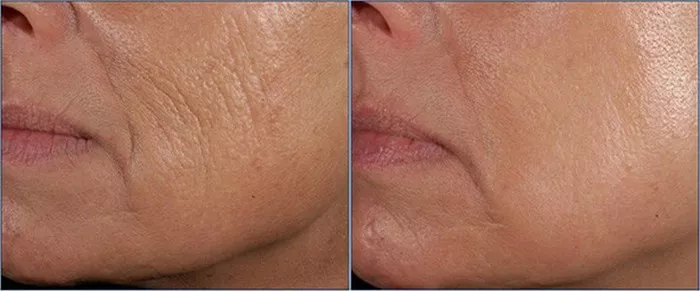Wrinkles are a natural part of the aging process and can be a common concern for many individuals. While surgical procedures such as facelifts and injections like Botox and dermal fillers are popular options for wrinkle reduction, they may not be suitable for everyone. The good news is that there are non-surgical alternatives available that can help minimize the appearance of wrinkles. In this article, we will explore various non-surgical methods to address wrinkles and provide insights into their effectiveness.
Understanding Wrinkles
Wrinkles are lines and creases that form on the skin’s surface due to a combination of factors such as aging, sun exposure, genetics, and lifestyle choices. They typically appear on areas of the face that are more prone to repetitive movements and loss of elasticity, such as the forehead, around the eyes (crow’s feet), and mouth.
Non-Surgical Options for Wrinkle Reduction
If you prefer non-surgical methods to address wrinkles, several effective options can help improve the appearance of your skin:
-
Topical Creams and Serums
Over-the-counter and prescription creams and serums formulated with ingredients such as retinol, hyaluronic acid, peptides, and antioxidants can help reduce the appearance of wrinkles. These products work by hydrating the skin, promoting collagen production, and improving skin texture. While results may vary, consistent use over time can lead to noticeable improvements.
-
Chemical Peels
Chemical peels involve the application of a chemical solution to the skin, which exfoliates the outer layers and stimulates collagen production. This can help improve skin texture, reduce fine lines, and promote a more youthful appearance. Chemical peels are available in different strengths, ranging from mild to deep, and can be tailored to your specific needs and skin condition.
-
Microdermabrasion
Microdermabrasion is a non-invasive procedure that uses a handheld device to gently exfoliate the outermost layer of the skin. By removing dead skin cells and stimulating cell turnover, microdermabrasion can help reduce the appearance of fine lines and wrinkles. It is generally a safe and well-tolerated treatment that requires no downtime.
-
Laser Therapy
Laser treatments, such as fractional laser resurfacing and intense pulsed light (IPL), can target wrinkles and stimulate collagen production. These treatments work by delivering controlled heat energy to the skin, triggering the body’s natural healing response and promoting new collagen formation. Laser therapy can improve skin texture, tone, and the appearance of wrinkles.
-
Radiofrequency (RF) Therapy
RF therapy uses radiofrequency energy to heat the deeper layers of the skin, stimulating collagen production and tightening the skin. This non-surgical treatment can help reduce the appearance of wrinkles and improve skin laxity. RF therapy is well-tolerated and requires minimal downtime.
-
Ultrasound Therapy
Ultrasound treatments, such as Ultherapy, use focused ultrasound energy to stimulate collagen production deep within the skin. This can help tighten and lift sagging skin, reducing the appearance of wrinkles. Ultrasound therapy is non-invasive and requires no downtime.
-
Injectables: Botox and Dermal Fillers
While injectables are not surgical procedures, they involve the use of needles to deliver substances into the skin. Botox injections can temporarily relax the muscles responsible for dynamic wrinkles, such as frown lines and crow’s feet. Dermal fillers, on the other hand, can add volume to areas with static wrinkles, plumping up the skin and smoothing out lines. These treatments are minimally invasive and provide immediate results.
Combination Approach and Skincare
To maximize the effectiveness of non-surgical wrinkle reduction methods, it’s often recommended to combine different treatments and maintain a consistent skincare routine. This may involve using topical products, receiving regular treatments like chemical peels or microdermabrasion, and incorporating other modalities like laser or RF therapy as needed. Additionally, protecting your skin from sun damage, maintaining a healthy lifestyle, and avoiding smoking can also contribute to wrinkle prevention and overall skin health.
Expectations and Results
It’s important to have realistic expectations when pursuing non-surgical options for wrinkle reduction. While these treatments can significantly improve the appearance of wrinkles, they may not completely eliminate deep or severe lines. The effectiveness of non-surgical methods can vary depending on factors such as the severity of wrinkles, skin condition, and individual response to treatment. It’s advisable to consult with a qualified skincare professional who can assess your skin and recommend the most appropriate options based on your goals.
Conclusion
Surgery is not the only solution for wrinkle reduction. Non-surgical options provide effective alternatives for those seeking to minimize the appearance of wrinkles without going under the knife. With the advancements in skincare technology and the availability of various treatments, you can explore non-surgical methods such as topical products, chemical peels, microdermabrasion, laser therapy, RF therapy, ultrasound therapy, and injectables to achieve a smoother, more youthful complexion. Remember to consult with a skincare professional to determine the best approach for your specific needs and to establish a personalized treatment plan that aligns with your goals and expectations.


